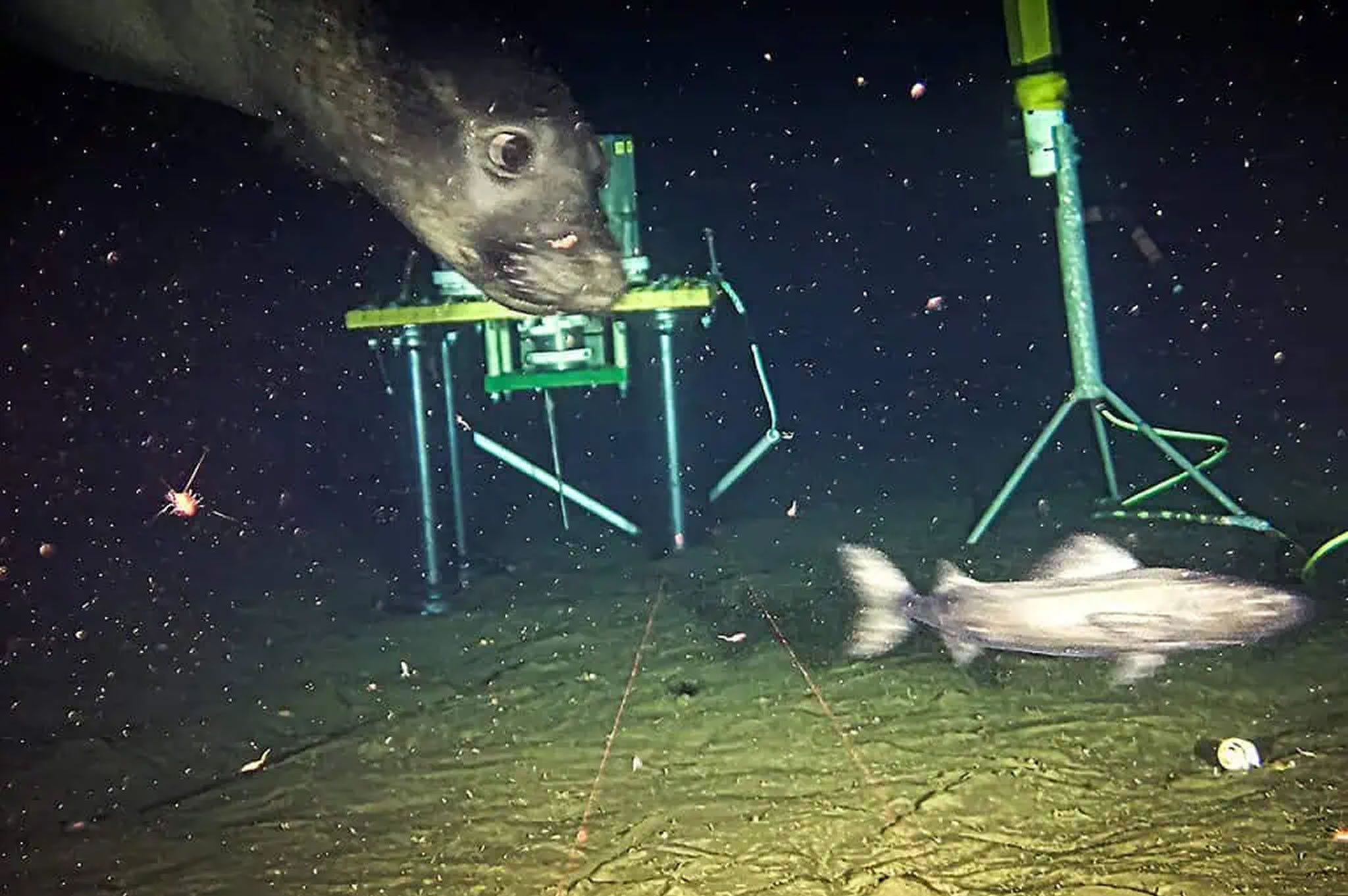Marine researchers from Canada recently embarked on an experiment to study the behavior of fish and other marine wildlife in the deep Pacific Ocean. Equipped with advanced monitoring equipment, the team set up a subsea observatory at Barkley Canyon, a deep trench off Vancouver Island’s west coast. The observatory was designed to attract marine life to the location using bait and then monitor their reactions to various stressors, such as light.
Unexpectedly, the experiment took an intriguing turn when nearby male northern elephant seals caught wind of the researchers’ sonar signals. These intelligent marine mammals quickly realized that the spot was rich in food and began photobombing the experiment. Despite the disruption caused by the seals, the scientists from the University of Victoria found the unexpected encounter to be a valuable opportunity to study the foraging strategies of these elusive creatures in the deep ocean.
The seals, weighing up to 5,000 pounds, demonstrated a keen ability to associate the sonar signals from the observatory with the presence of prey, particularly sablefish. The seals were observed repeatedly visiting the site over a period of ten days, showcasing their adaptability and intelligence in utilizing human-made infrastructure for their benefit. The researchers even went as far as naming the seals after members of The Beach Boys to differentiate between their frequency of visits and observed habits.
In addition to their hunting behaviors, the researchers made a fascinating discovery about the seals’ resting habits. For the first time, they observed the seals power-napping on the ocean floor, a behavior previously undocumented. The observatory’s sonar captured images of the seals taking brief rests before resuming their hunt, shedding new light on the underwater behaviors of these deep-diving mammals.
Northern elephant seals have a remarkable history of resilience, having staged a comeback from near extinction in the 19th century. Hunted for their blubber, the seals were believed to be extinct in 1892, with only about 20 surviving individuals. Today, their population has grown to over 200,000, a testament to their ability to adapt and thrive in the face of challenges.
These new findings offer a rare glimpse into the underwater world of northern elephant seals and highlight their remarkable survival strategies in one of the planet’s most challenging environments. The study, published in the journal PLOS ONE, opens up new avenues for understanding how marine animals interact with human-made infrastructure and adapt to changing environmental conditions.
As researchers continue to monitor the impact of a warming ocean on the availability of prey for elephant seals, the study serves as a reminder of the importance of studying and protecting these intelligent creatures. The unexpected photobombing incident by the elephant seals may have altered the course of the experiment, but it ultimately provided valuable insights into the behavior and adaptability of these fascinating marine mammals.










